Assistance Amidst War (3) | George Hogg: Igniting the Flame of Life for China's War of Resistance
A British journalist named He Ke in Chinese actively engaged in the Chinese People's War of Resistance against Japanese Aggression. He not only wrote articles to expose the atrocities of the Japanese invaders but also served as the principal of Pailin School in Shuangshipu, Shaanxi, and gave his young life to lead the students to a safe area. In October 2015, during his visit to the United Kingdom, President Xi Jinping spoke of the touching stories of mutual support and shared destiny between the Chinese and British people during World War II, mentioning the touching deeds of British journalist George Hogg.
On April 6, a delegation of over ten relatives of George Hogg visited the memorial hall. During the visit, the exhibition content evoked deep memories in Mark Thomas, Hogg's nephew. Thomas recounted Hogg's experiences in China in detail.
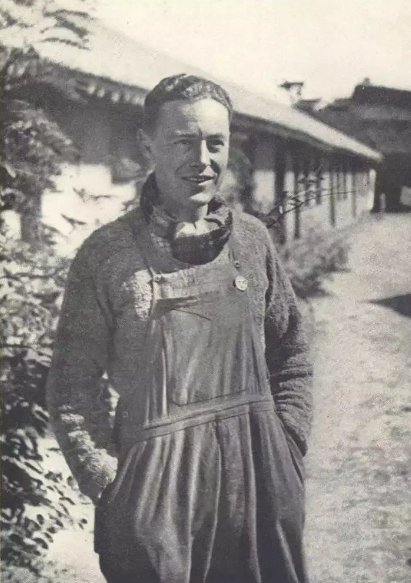
George Hogg
From Oxford Student to Aid Worker in China's War of Resistance
He Ke was born in 1915 into a British middle-class family and graduated from Oxford University in 1937 with a Bachelor of Arts degree. During his student years, He Ke demonstrated a spirit of adventure and independent thinking. The university’s director of discipline commented that he “possessed many fine inner qualities, was self-assured, and knew where he was going and what he wanted to do.”
After graduation, He Ke traveled around the world with his aunt and arrived in Shanghai at the beginning of 1938.
In Shanghai, He Ke met the American journalist Archibald Trojan Steele. On December 15, 1937, Steele’s article titled The Story of the Massacre—Japanese Army’s Killing of Thousands was published in the Chicago Daily News, which was the first report in the world about the atrocities committed by the Japanese army in Nanjing following the Nanjing Massacre.
While viewing the historical exhibition on Steele, Thomas paused to gaze at the historical photographs. He said, “In February 1938, Steele and He Ke became close friends. Steele shared with him many stories about what had happened in Nanjing, and that’s when He Ke learned about the Nanjing Massacre.”
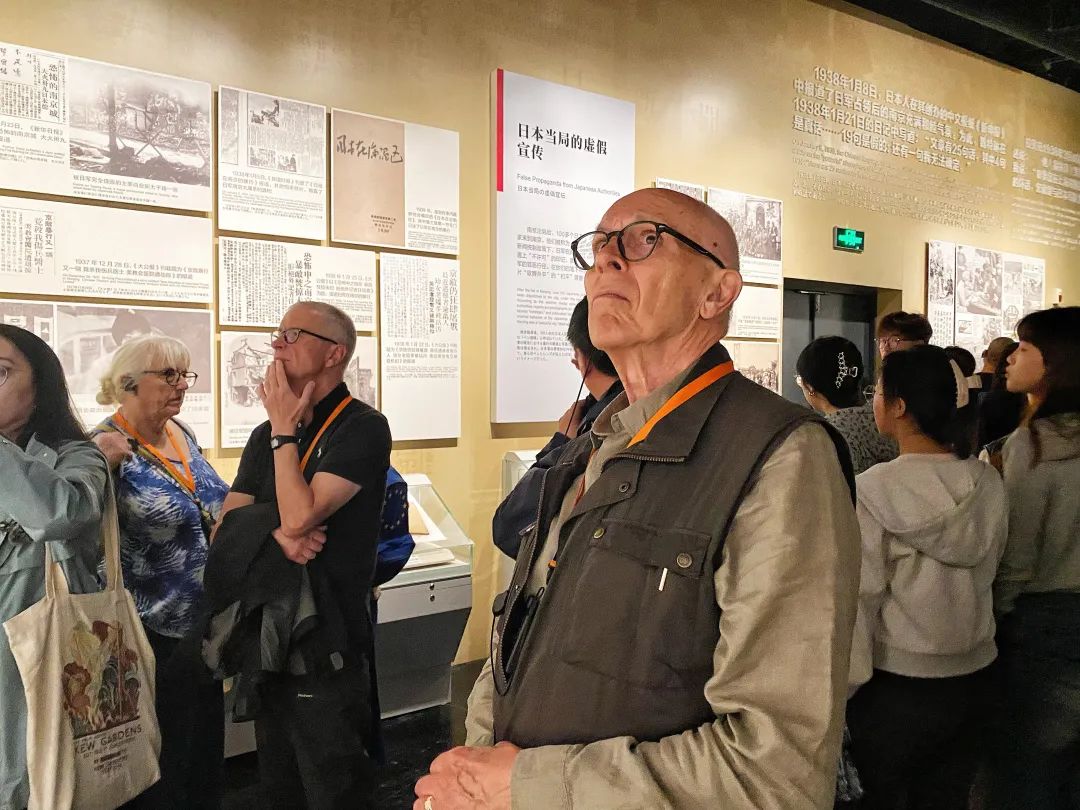
Mark Thomas
After witnessing and learning about the atrocities of the Japanese invading army, He Ke made a bold decision—to stay in China for further investigation. He was 22 years old that year.
“Using the Pen as a Weapon and Industrial Cooperatives as the Battlefield”
In March 1938, He Ke arrived in Hankou and, as a foreign journalist, wrote reports about the disasters brought to China by the Japanese army and sent them to all parts of the world.
During this period, He Ke got to know progressive individuals such as Smedley and Rewi Alley. In June 1938, with Smedley’s help, He Ke visited Yan'an for the first time and had his initial contact with the Chinese Communist Party.
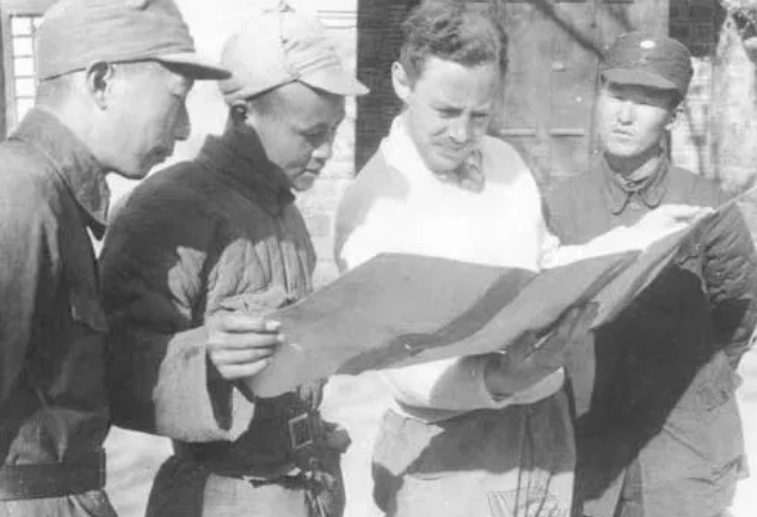
George Hogg with soldiers
In the summer of 1938, He Ke conducted interviews in Yan'an and the Jin-Cha-Ji Border Region. Through in-depth conversations with Zhu De and Nie Rongzhen, He Ke became confident about the victory of the War of Resistance and the future of China.
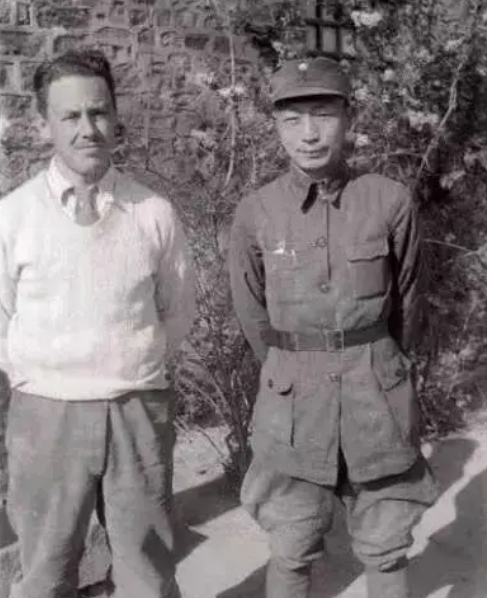
George Hogg with Nie Rongzhen
He Ke wrote the book I See a New China based on his experiences and observations in China, introducing the real situation of the anti-Japanese base areas under the leadership of the Chinese Communist Party. In the book, he wrote: "The northwest is the ideal place for me to examine the birth of a new China. It is the backbone of the Chinese nation. Here we can see the amazing creativity of the Chinese people."
In 1939, He Ke accepted Zhu De's suggestion and joined the "China Industrial Cooperative Movement" initiated by Rewi Alley and others, serving as the English secretary of the Northwest Office. He wrote propaganda materials for the movement, expanding its influence.
He Ke traveled extensively in places like Shaanxi and Gansu, organizing refugees to produce military supplies to support the front lines. Rewi Alley commented on him, saying, "He used his pen as a weapon and the Industrial Cooperative as his battlefield."
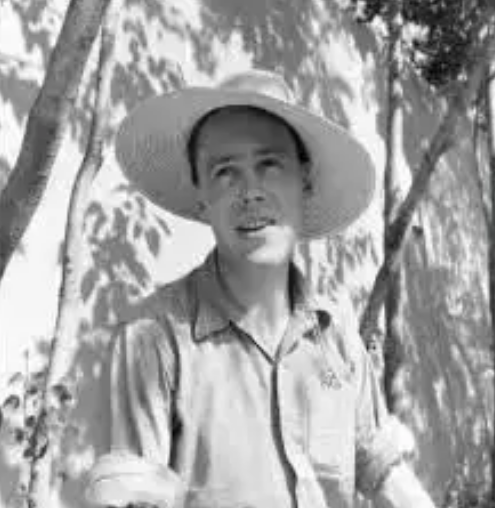
George Hogg during his tenure as the English secretary of the Northwest Office of the Industrial Cooperative Movement
Lighting the Spark of Education
To rescue children displaced by war, Rewi Alley and He Ke established the Peili School in Shuangshipu Town, Feng County, Shaanxi, with He Ke serving as the principal.
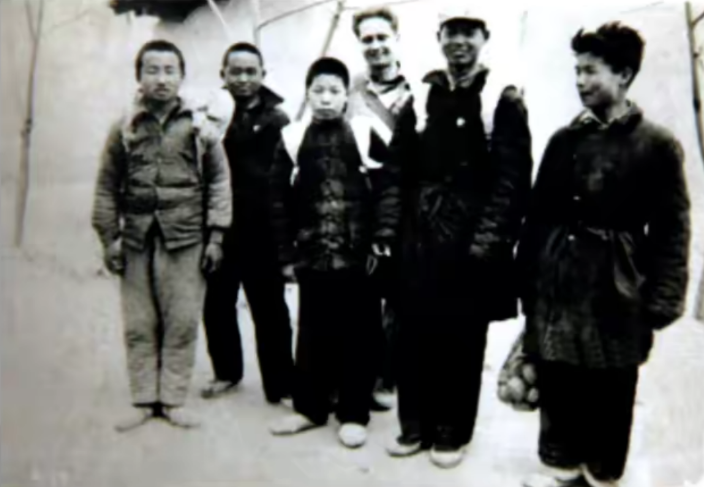
George Hogg with students
At the foot of Fenghe Mountain in Feng County, he worked alongside students, carrying stones and timber to build workshops. Understanding the characteristics of his students, he implemented targeted teaching methods.
To minimize the disruptions caused by war to educational activities, He Ke led the entire school, including faculty and students, to relocate to Shandan, Gansu. Facing insufficient funding for the school's construction in Shandan, He Ke donated money sent from his family. After several months of construction, the school was equipped with steam boilers, steam engines, and generators, and it established workshops for spinning and weaving, as well as facilities for blacksmithing and machine work.
He Ke taught multiple subjects. In his spare time from classes, he taught the children English and led them to swim in the river. He also organized various cultural and entertainment activities at the school, leading the students in rehearsals of the school song and anti-Japanese revolutionary songs.
Last Words: “Dedicate Everything I Have to Peili School”
On July 22, 1945, on the eve of the victory of the War of Resistance, He Ke unfortunately passed away suddenly due to tetanus, at the age of only 30. He was laid to rest in Northwest China.
As he lay on his deathbed, He Ke wrote on a piece of paper: “Dedicate everything I have to Peili School.”
The teachers and students built a cemetery for He Ke in Shandan and erected a stone tablet in front of his grave, inscribed with verses by the British poet Grenfell:
“O life so rich and bright,
So full of warmth and light,
For which men toiled with all their might.
He's gone, his struggle at an end,
Yet in the fight, the fallen friend
Shines with a more resplendent sheen.”
In the 1960s, Rewi Alley wrote a book about He Ke titled From Oxford to Shandan. In the preface, Alley wrote: “He died in the belief of the Chinese revolution. He was a link between the Chinese people and the British people.”
Writing a Life Story of Commitment to Justice
From Oxford, England, to Shandan, Gansu, from a journalist to an educator, George Hogg wrote with his life the commitment to justice.
In May 2016, the International Committee of the China Industrial Cooperatives (ICIC) established a memorial in Shanghai to honor George Hogg and to publicize his contributions to the Chinese People's War of Resistance.
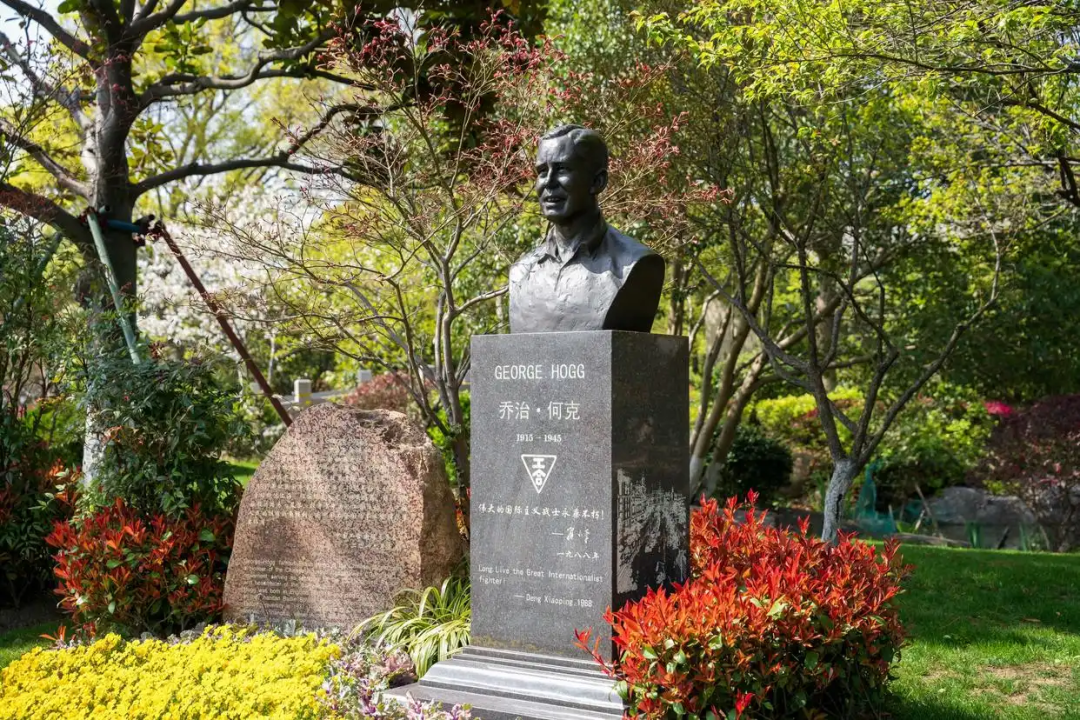
Monument to George Hogg
This year marks the 110th anniversary of George Hogg's birth and the 80th anniversary of his death. Recently, relatives of George Hogg came to China to follow in his footsteps and retrieve memories associated with him.
In the shadow of war, the light of humanity is the most resilient form of resistance. As Thomas remarked while visiting the exhibition section on "Humanitarian Aid," "We must learn from history, believe in courage, and have faith in the power of humanity."

